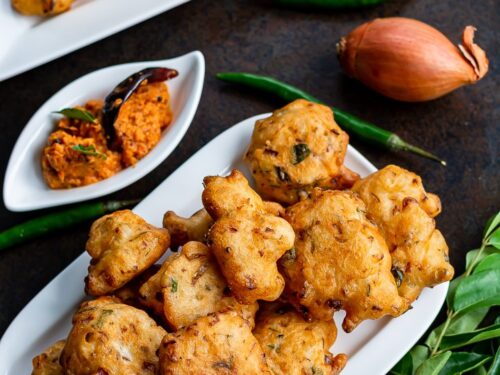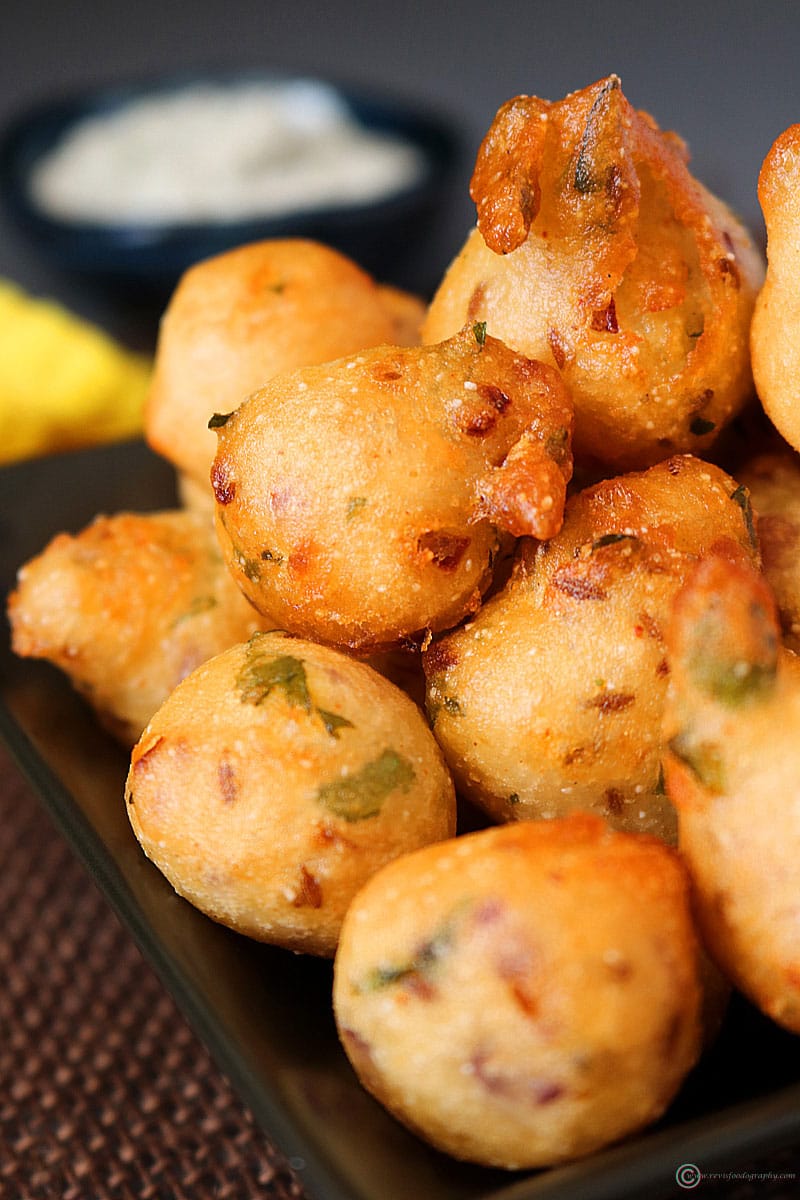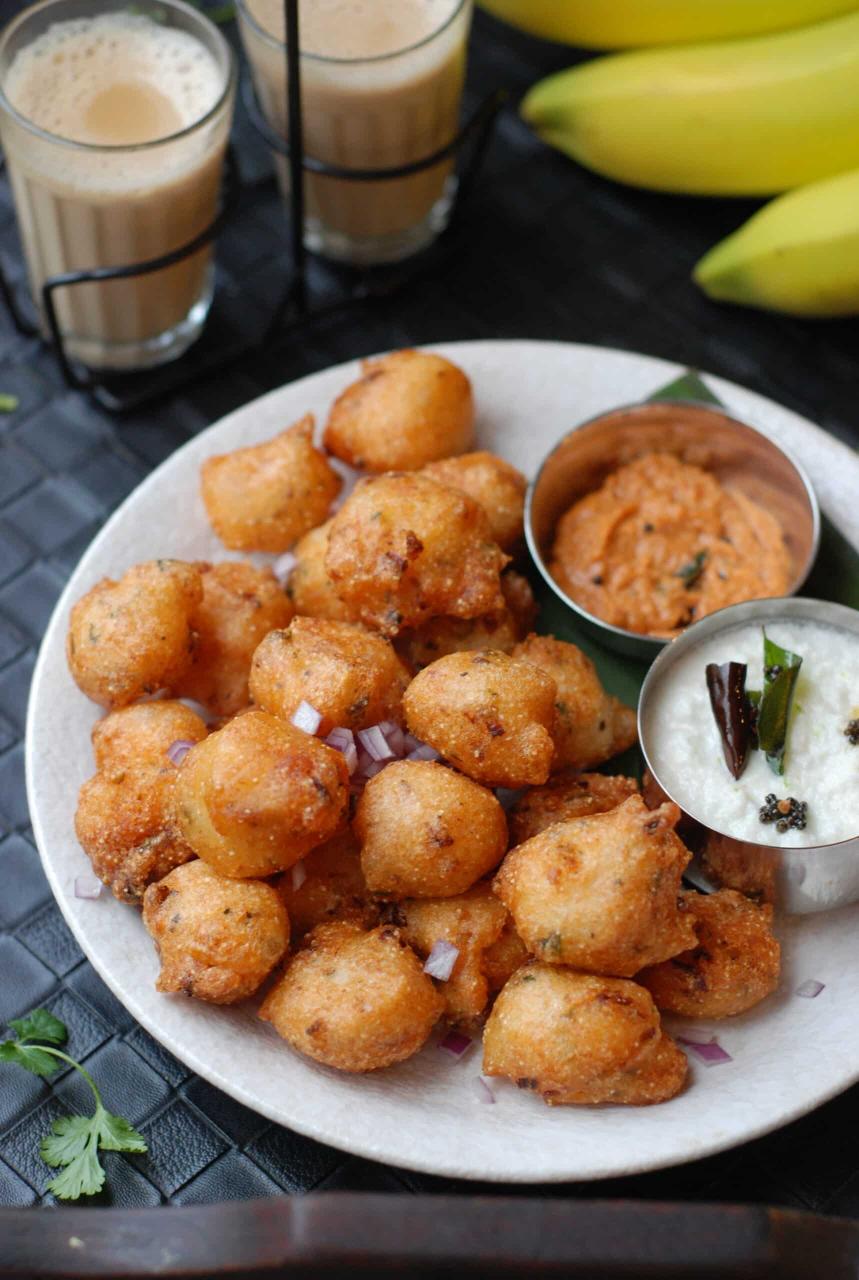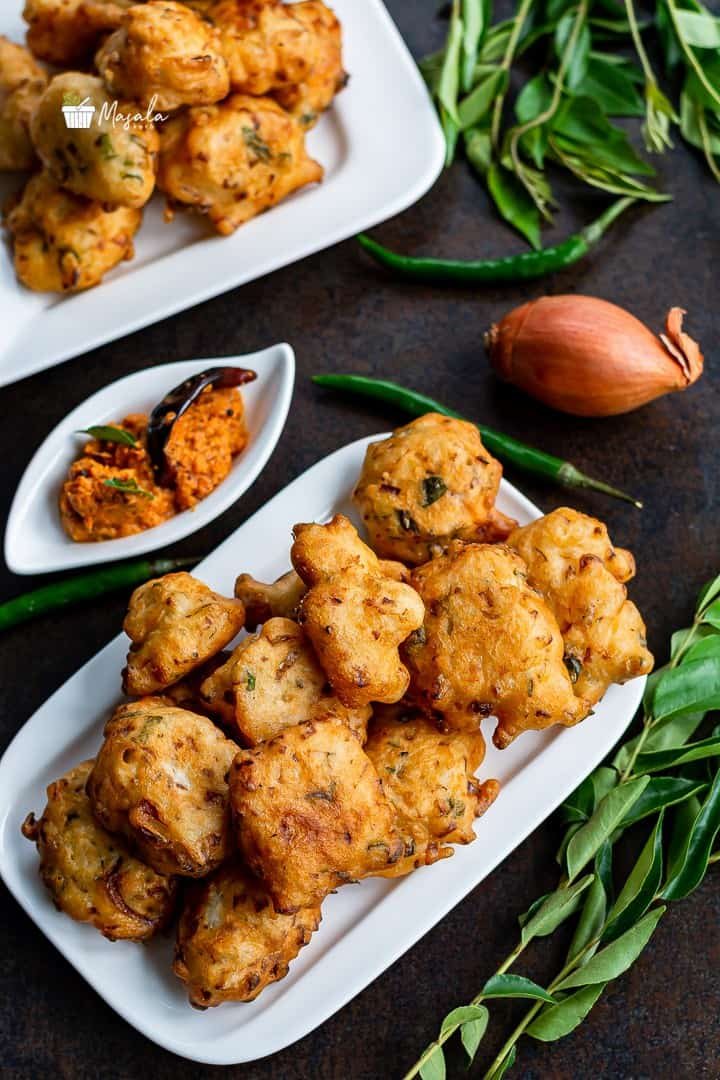Punugulu are crispy deep-fried fritters that hail from the Indian states of Andhra Pradesh and Telangana. Recognized as a popular street food, as well as a common household snack, they are known for their golden-brown exterior and soft, fluffy interior. Punugulu is often made from leftover idli or dosa batter, which is a mixture of ground rice and urad dal (black lentils) that has been fermented.
Traditionally, the batter for Punugulu may be seasoned with finely chopped onions, green chilies, cumin seeds, and fresh herbs like coriander for an added burst of flavor. Small portions of this seasoned batter are then dropped into hot oil and fried until they turn golden and crisp. The result is a snack with a crunchy outer shell and a pillowy soft center, perfect for dipping in coconut chutney, tomato chutney, or sambar.
Punugulu Deep-Fried Rice Fritters recipe


Punugulu Deep-Fried Rice Fritters
Equipment
- 1 paper towels
- 1 medium pot
- 1 wide bowl
Ingredients
- 1 cup Idli batter or Dosai batter
- 1/3 cup finely chopped onion
- 1 tablespoon rice flour
- 1 tablespoon semolina
- 1 teaspoon cumin seeds
- 1 teaspoon finely chopped peeled fresh ginger
- 1/2 teaspoon peppercorns
- 1/2 teaspoon salt
- 1/2 teaspoon baking soda
- 1/2 teaspoon asafoetida
- 11/2 cups vegetable or corn oil
Instructions
- Line a plate with paper towels and set aside.
- In a wide bowl, stir together the batter, onion, rice flour, semolina, cumin seeds, ginger, peppercorns, salt, baking soda, and asafoetida until thoroughly combined. The batter should be thick.
- In a medium pot over medium heat, heat the oil to between 350°F and 375°F. Test to see if the oil is hot enough by dropping 1 teaspoon of batter into the hot oil. If it sizzles and floats, without sinking, the oil is ready for frying.
- Using a cookie scoop, slowly and carefully drop 5 or 6 fritters into the hot oil. Do not fill the entire pot. Fry for 30 to 45 seconds. Using a slotted spoon, carefully flip the fritters. Fry for 30 to 45 seconds more. Continue flipping and frying until the bubbling sound stops.
- Using a slotted spoon, transfer the fritters to the paper towel– lined plate to drain. Repeat with the remaining batter.
Notes
As the fermented batter is slightly sour, the taste of the fritters will differ from those made with fresh batter.
Cooking Tips about Punugulu Deep-Fried Rice Fritters

- Batter Consistency: The batter for Punugulu should be slightly thick to hold its shape when dropped into hot oil. It should not be too runny; otherwise, it will absorb more oil and become greasy.
- Perfect Fermentation: If using leftover idli or dosa batter, ensure that it is well-fermented. A good ferment adds tanginess to the flavor and contributes to a light and airy texture.
- Flavor Enhancements: Add finely chopped onions, green chilies, cumin seeds, and fresh coriander leaves to the batter for an extra burst of flavor and texture variation.
- Hot Oil: Make sure the oil is hot enough before frying, usually around 350-375°F (175-190°C). If the oil is not hot enough, the Punugulu will soak up oil and become soggy; if it’s too hot, they’ll brown too quickly without cooking through.
- Testing the Oil: To test the temperature of the oil, drop a small piece of batter into it. If it rises immediately without browning too quickly, the oil is at the correct temperature.
- Even Shaping: Use two spoons or your hands to drop the batter into the oil gently, aiming for roughly spherical shapes. Wetting your hands can prevent the batter from sticking.
- Frying In Batches: Do not overcrowd the pan when frying as this can lower the temperature of the oil and cause the Punugulu to stick together. Frying in batches ensures even cooking and proper browning.
- Drain Excess Oil: After frying, place the Punugulu on a paper towel-lined plate to remove excess oil.
- Serve Immediately: Punugulu tastes best when served hot and fresh as they are crispy on the outside with a soft interior.
- Dipping Sauces: Serve them with chutneys like coconut chutney, tomato chutney, or even sambar for dipping.
Serving suggestions about Punugulu Deep-Fried Rice Fritters

- Dipping Sauces: Serve them with a variety of chutneys like coconut chutney, onion-tomato chutney, or ginger chutney for dipping, which will add different flavor dimensions to the snack.
- With Sambar: Pairing Punugulu with a bowl of hot and spicy sambar makes for a satisfying meal, especially during cooler weather.
- Tea-Time Treat: These fritters are perfect as a tea-time snack, often enjoyed with a cup of piping hot chai, providing a delightful contrast between the savory fritters and the sweet tea.
- Snack Platter: Create a flavorful platter by adding other South Indian snacks such as masala vadas or mirchi bajjis along with Punugulu for a diverse range.
- As an Appetizer: Offer Punugulu as appetizers at gatherings, perhaps skewered with a toothpick for easy handling and clean fingers.
- Street Food Style: Recreate street food vibes at home by serving Punugulu in paper cones or on banana leaves for authenticity.
- Overflowing Bowl: Present them piled high in a bowl, inviting everyone to grab and enjoy the addictive munchies.
- Kids’ Party Favorite: Since they are bite-sized and less messy, they make for a perfect snack for children’s parties.
- Topped with Onions: Top the fritters with finely chopped onions and a sprinkle of chaat masala before serving for an added burst of flavor.
- Brunch Addition: Incorporate Punugulu in a brunch menu with other savory items for a filling and varied meal experience.
Top 5 FAQs about Punugulu Deep-Fried Rice Fritters

- What is Punugulu? Punugulu is a popular South Indian snack, specifically from Andhra Pradesh and Telangana. They are deep-fried fritters made from a fermented batter typically consisting of rice and urad dal (black lentils). The batter is often seasoned with onions, cumin, green chilies, and fresh herbs.
- What kind of batter is used for Punugulu? The batter for Punugulu is generally made from leftover idli or dosa batter, which is prepared by soaking and then grinding rice and urad dal to create a smooth paste. This paste is left to ferment overnight. Seasonings such as onions, cumin seeds, and green chilies are added to the batter before frying.
- How do I achieve the perfect texture for Punugulu? To get Punugulu with a crispy outside and fluffy inside, use a well-fermented batter and ensure that it has a medium-thick consistency. Also, the oil should be at the right temperature (around 350-375°F or 175-190°C), and the fritters should be fried until they turn golden brown.
- Can Punugulu be made in advance? Punugulu tastes best when served fresh since they lose their crispiness over time. If you need to prepare in advance, keep the batter in the refrigerator, but fry the Punugulu just before serving.
- Are there any variations to the classic Punugulu recipe? Yes, there are various creative twists on Punugulu. You can add grated ginger or curry leaves to the batter for different flavors. Some people even stuff them with fillings like cheese or paneer for an interesting variation.
Punugulu Deep-Fried Rice Fritters embody a delightful aspect of South Indian culinary tradition. Their enticing golden-brown exteriors, coupled with delightfully soft and airy interiors, make them not just a snack but an experience that caters to the soul. The mastery in creating Punugulu lies in the fermentation of the batter, which provides a subtle tang enhancing their overall flavor profile.

Leave a Reply